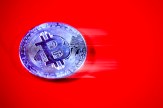Will the Federal Reserve pause rate cuts after January’s inflation uptick?

A Northeastern University economist says that the downward trend in the inflation rate appears to be “stalling out,” after a slight jump in January surprised analysts on Wednesday.
U.S. inflation rose to 3%, according to data from the Bureau of Labor Statistics with the Consumer Price Index up 0.5% from December — the fastest monthly increase since August 2023. Last month the annual pace was 2.9%.
“There’s been a period of disinflation — meaning the inflation rate has come down — but it appears to be stalling out at a level that’s above the Federal Reserve’s target of 2% on a year-to-year basis,” says Bob Triest, professor of economics at Northeastern University.
Triest predicts the new data will make the Federal Reserve pause on any decisions to lower interest rates.
“My reading of the data is that the inflation rate will likely resume its downward trajectory,” Triest continues. “But I think the Federal Reserve will be wise to take a wait-and-see stance and look at the data and see what actually does happen.”
Inflation has subsided drastically since cresting above 9% in 2022, but the downward trajectory has been uneven in recent months. The latest report, released by the Bureau of Labor Statistics, continues this pattern.
Triest says there’s “room for hope” as the numbers released Wednesday are heavily dependent on shelter costs — which account for about a third of the CPI.
“While inflation in shelter costs has come down and is continuing to do so, it is still running above the overall inflation number,” Triest explains. “So, over time, as that continues to fall, that should be bringing down the overall inflation rate.”
He added that the Personal Consumption Expenditures Index (another inflation measure) does not weigh shelter costs as heavily, so will likely come in lower than Wednesday’s CPI reading.
But Triest also said some other “idiosyncratic factors” — for example, he noted that automobile insurance rose by 11.8% year-over-year — have kept inflation steady.
And steadily higher-than-desired inflation can have consequences.
Triest said expectations of future inflation can become a “self-fulfilling prophecy,” as people sign contracts for goods, wages, etc. based on the assumption that inflation will remain high … thus increasing inflation.
Editor’s Picks
On the other hand, Triest notes that corporations often use the new year as an opportunity to “reset prices,” so January inflation readings can be higher than other months.
But the Federal Reserve would be wise to study further data before changing interest rates, Triest says, noting several unknowns that could greatly influence inflation in the future.
“The big question now is what is the impact of tariffs going to be on inflation,” Triest says.
He notes that tariffs tend to increase prices, which will be reflected in the inflation rate and could be reflected in expectations of inflation. Immigration policy and deportations may also reduce the supply of labor in the economy and push wages upwards, leading also to inflation.
On the other hand, decreases in federal spending — as proposed by the Trump administration — tends to reduce aggregate demand in the economy and slow economic activity, Triest says.
“I see the balance of the policies being considered by the Trump administration would tend to push prices up somewhat, but it’s really unclear what the quantitative magnitudes of these effects will be,” Triest says. “That’s why I’m reasonably certain the Fed’s going to take a stance of ‘let’s see what the data shows’ regarding inflation and not implement changes in monetary policy until they see what the effects of the Trump policies will be.”












